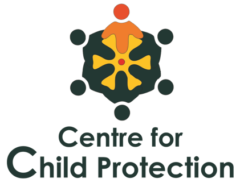What Is Child Rights ?
A right is as an agreement or contract established between the persons who hold a right (often referred to as the “rights-holders”) and the persons or institutions which then have obligations and responsibilities in relation to the realization of that right (often referred to as the “duty- bearers”.) Child rights are specialized human rights that apply to all human beings below the age of 18.
Universally child rights are defined by the United Nations and United Nations Convention on the Rights of the Child (UNCRC). According to the UNCRC Child Rights are minimum entitlements and freedoms that should be afforded to all persons below the age of 18 regardless of race, colour, gender language, religion, opinions, origins, wealth, birth status or ability and therefore apply to all people everywhere. The UN finds these rights interdependent and indivisible, meaning that a right can not be fulfilled at the expense of another right.
The purpose of the UNCRC is to outline the basic human rights that should be afforded to children. There are four broad classifications of these rights. These four categories cover all civil, political, social, economic and cultural rights of every child.
- Right to Survival: A child’s right to survival begins before a child is born. According to Government of India, a child life begins after twenty weeks of conception. Hence the right to survival is inclusive of the child rights to be born, right to minimum standards of food, shelter and clothing, and the right to live with dignity.
- Right to Protection: A child has the right to be protected from neglect, exploitation and abuse at home, and elsewhere.
- Right to Participation: A child has a right to participate in any decision making that involves him/her directly or indirectly. There are varying degrees of participation as per the age and maturity of the child.
- Right to Development: Children have the right to all forms of development: Emotional, Mental and Physical. Emotional development is fulfilled by proper care and love of a support system, mental development through education and learning and physical development through recreation, play and nutrition.
What Is Child Protection?
UNICEF considers child protection as the prevention of or responding to the incidence of abuse, exploitation, violence and neglect of children. This includes commercial sexual exploitation, trafficking, child labour and harmful traditional practices, such as female genital mutilation/cutting and child marriage. Protection also allows children to have access to their other rights of survival, development, growth and participation. UNICEF maintains that when child protection fails or is absent children have a higher risk of death, poor physical and mental health, HIV/AIDS infection, educational problems, displacement, homelessness, vagrancy and poor parenting skills later in life.
According to the Integrated Child Protection Scheme (ICPS) Child Protection is about keeping children safe from a risk or perceived risk to their lives or childhood. It is about recognizing that children are vulnerable and hence reducing their vulnerability by protecting them from harm and harmful situations. Child protection is about ensuring that children have a security net to depend on, and if they happen to fall through the holes in the system, the system has the responsibility to provide the child with the necessary care and rehabilitation to bring them back into the safety net.
| CHILD PROTECTION | ||
|---|---|---|
| Prevention | Intervention | Rehabilitation |
| Law and Policies Processes and Protocols Mechanisms and Systems Monitoring Sensitization and Awareness Building |
Law and Policies Access and Assistance Immediate Relief (SOS attention) Restoration of rights/Status Quo Punish violators |
Law and Policies Long term care until age 18 Skills and Training |
It is important to understand the difference between these two concepts. Child rights are a set of principles or ideals. They are entitlements and some of them are justifiable in a court of law, but they are not tangible. Protection is one of these rights. But Child Protection is more than a right. It is a framework or system by which the rights of a child can come to be. The framework consists of various duty bearers such as the departments of the government, police, school, civil society, who all have roles to play to ensure that a child’s rights are met, and in the case that a child’s rights are violated that the violator be brought to justice and care be provided to the child. Child protection is not only treatment, but should also be preventive. Risk management needs to take place to reduce the risk of violation of child rights in any given circumstance or space.
Child protection is hence the means through which all other rights of a child can be upheld. For example a child has a right to live a normal childhood in a family environment. The child protection framework need to first take steps to ensure families are able to survive by providing them when health, education, and food for free or at minimal cost. The next step is to address the needs of children who have fallen through the cracks such as destitute, abandoned, and orphan children. The framework includes the mechanisms to relocate these children into caring families either through adoption or foster care and provide these children with access to health and education services. Hence the framework is not a single ministry or single government body it is the interlinking functions of all ministries and sectors. (Source Childline)
Statistics On Underprivileged Children In India
There are 444 million children in India under the age of 18 years. This constitutes 37% of the total population in the country (Census 2011)
Education:
- 1 in 4 children of school-going age is out of school in our country – 99 million children in total have dropped out of school (Census 2011)
- Out of every 100 children, only 32 children finish their school education age-appropriately (District Information System for Education (DISE) 2014-15)
- Only 2% of the schools offer complete school education from Class 1 to Class 12 (District Information System for Education (DISE) 2014-15)
Child Labour And Exploitation:
- There are 10.13 million child labourers between 5-14 years in India (Census 2011)
- India has 33 million working children between the ages of 5-18 years. In parts of the country, more than half the child population is engaged in labour (Census 2011)
- Every 8 minutes, a child goes missing in India – kidnapping and abduction is the largest crime against children in our country (District Crime Record Bureau (DCRB) 2014)
- Over the last 10 years, crimes against children has increased 5 times over (District Crime Record Bureau (DCRB) Data Series)
- Fear of failure in examinations in the second highest cause of suicides in children (Accidents and Suicide Deaths in India (ASDI) 2014)
Health:
- The health indicators of children in India are among the worst in the world – only around half (54%) of the infants in India are fully immunised. More than half the births in the country continue to remain home-births (National Family Health Survey (NFHS) 3)
- 4 out of 5 children under 3 years of age in the country are anemic (National Family Health Survey (NFHS) 3)
- 3 out of 5 children are malnourished (National Family Health Survey (NFHS) 3)
- Around 8.5 lakh children are estimated to die before their first birthday each year (Census 2011 and Sample Registration System (SRS) 2013)
- Latest NFHS data shows that less than one-third infants receive adequate diet in all states in the country* (National Family Health Survey (NFHS) 4)
- *Data has been released for 18 states and Union Territories
Girl Child:
- 42% of married women in India were married as children (District Information System for Education (DISE) 3)
- 1 in every 3 child brides in the world is a girl in India (UNICEF)
- India has more than 4.5 lakh girls under 15 years of age who are married with children. Out of these, 70% of the girls have 2 children (Census 2011)





